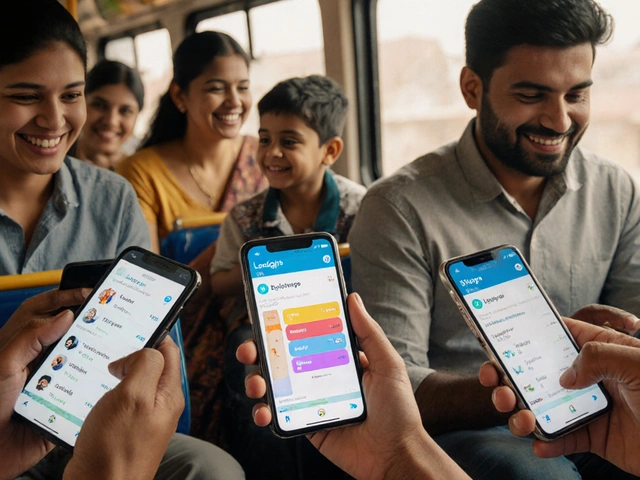Ever felt the job scene was anything but fair? There’s one method used worldwide that tries to keep things on the level—the open competitive examination. Instead of jobs going to someone’s cousin, friend, or neighbor, these exams aim to give everybody an equal shot. Imagine applying for a public sector job—government offices, public banks, even schools—where you’re judged not by who you know, but what you know and what you can do. This approach has been around for over a century and, while it’s not always perfect, it’s changed countless lives by leveling the playing field. Ready to find out how it actually works, who can take part, and how to give yourself the best chance? Buckle up.
What Is an Open Competitive Examination?
Picture a system designed to root out favoritism in hiring. The open competitive examination is exactly that. It's a formal recruiting method—usually for government jobs—where anyone who meets the basic requirements can apply. In short: big public job openings are filled by the people who do best on the test, not those with inside connections. Think of it as a nationwide audition for civil service roles.
These exams are typically advertised publicly—online portals, newspapers, job boards. Anyone with the right qualifications or experience can try their luck. They cover hundreds of positions: police officers, clerks, teachers, railway workers, accountants—you name it. In the U.S, organizations like the United States Office of Personnel Management (OPM) run these exams for federal jobs. Elsewhere, agencies like India’s UPSC, the UK Civil Service, or Nigeria’s Federal Civil Service Commission do similar work.
The tests are intentionally tough. They often include written papers, interviews, physical agility tests, group discussions, and psychometric assessments. Everything is designed to check for skills, knowledge, reasoning, memory, and sometimes fitness. These exams try to be as objective as possible—no looking at your last name, your old school, or your personal network. Just raw performance.
But here’s where it gets interesting. Some governments combine open exam scores with experience, seniority, or special category relaxations (like for disabled applicants or under-represented groups) to make hiring truly inclusive. Still, whether you’re a teenager fresh out of school or a mid-career pro wanting a switch, if you meet the criteria, you can enter the race.
How the Process Works: From Notification to Appointment
The whole journey kicks off when a government agency or public enterprise spots an opening—or a few hundred. Instead of quietly filling these spots, they blast out notifications. You’ll see job ads on official websites, social media, and even old-school bulletins in community centers or universities. These notifications spill out every vital detail: what jobs are open, how many, what qualifications are needed, pay scale, exam dates, topics to be tested, and application deadlines.
Here’s how it usually rolls from start to finish:
- 1. Notification and Registration: Aspirants fill out online or paper applications. There’s usually a nominal fee, though it may be waived for low-income candidates.
- 2. Admit Cards: Candidates who meet basic eligibility get a ticket (admit card) to enter the venue—just like a concert pass, except instead of music, you get hours of brain-melting questions!
- 3. Written Exam: The heart of the process. Multiple-choice questions, essays, case-studies—you name it. Sometimes, it’s done online. Other times, you scribble away in big silent halls.
- 4. Skill/Practical Test: For specific roles—say, typing for clerks or law enforcement fitness evaluations—there might be extra rounds.
- 5. Interviews/Personality Assessments: Those who ace the written parts meet interview boards. Think panels grilling you about logic, ethics, current affairs, or work scenarios.
- 6. Background Checks and Medicals: To be sure there’s no funny business, authorities double-check documents, references, even run medical fitness tests.
- 7. Final Merit List: Scores from every round are added up and ranked. Only those at the top of the pile snag an offer.
Take India’s SSC (Staff Selection Commission) as a case study. In 2023, one of their exams drew 19 million applicants for less than 150,000 jobs. That’s about 122 candidates for one post! Safe to say the competition is wild.
Why Open Competitive Exams Matter
Corruption and nepotism have haunted job markets forever. Open competitive exams are designed to fight that battle. They’re not a magic fix, but they move the system closer to fairness. No matter your background—rich or not, famous or not—if you perform well, the job can be yours. This has transformed entire families. In countries like South Korea, where public jobs are a prized ticket out of poverty, these exams are taken incredibly seriously, often forming the centerpiece of young people’s dreams.
The idea goes way back. China’s famed imperial exams in the 6th century handpicked future bureaucrats by grilling them on philosophy, calligraphy, and law. The UK borrowed pieces of this in the 19th century for its own civil service, and so the template spread globally. Fast forward, you now have a merit-based pipeline into secure, respected professions—complete with pensions, healthcare, and job security most private jobs envy.
One critical upshot? Open exams often highlight talent in unexpected corners of the country. Stories abound of rural kids besting top urban students or a first-generation college grad ranking first nationwide. If it’s a written exam, it doesn’t care how fancy your shoes are—as long as your answers are good, you’re in the running.
Sure, every system has loopholes and challenges—leaks, impersonation, and sometimes biased interviews. Recent reforms often include digital testing (to minimize cheating), CCTV surveillance, and stricter document checks. There’s always room for improvement, but the existence of the system offers hope to millions locked out by traditional, closed recruitment.

Tips for Success in Open Competitive Exams
If you’re itching to compete, know this: the sheer volume of candidates means you need a plan, not just hope. Here’s the strategy that gets the best through.
- Understand the Syllabus and Pattern: Download the official syllabus, previous year papers, and sample tests. This is your blueprint—ditch random study and focus only on areas that matter.
- Time Management: Divide your prep into months, weeks, and days. Use a calendar app or a good old wall planner, breaking subjects into small, digestible pieces.
- Mock Tests: Nothing builds confidence like practice. Take full-length mock tests every week. Analyze what went wrong and adjust quickly.
- Group Study: Team up with reliable friends (and no, WhatsApp memes don’t count as ‘study’). Explaining answers to others often cements concepts in your mind.
- Stay Updated: Most public sector exams have a ‘current affairs’ segment. Subscribe to a daily news briefing or use apps that summarize the news.
- Health Matters: Don’t cripple yourself chasing perfection. Schedule exercise, sleep properly, and eat real food. Exam burnout is real, and nobody wants to nap during their test.
- Positive Mindset: Many toppers talk about failing before finally acing the test. Treat every attempt as a learning experience, not a disaster. Stress sabotages memory and focus.
Here’s a fact that stings: about 70% of first-timers don’t clear their first open competitive exam. But, data from the Bangladesh Civil Service Commission in 2022 revealed that candidates who consistently practiced with mock tests were 2.5 times more likely to qualify on their next try. There’s no substitute for effort and persistence.
Notable Examples & Stats: The Big Picture
Open competitive exams aren’t just an Asian phenomenon. The U.S. Foreign Service Officer Test, the UK’s Civil Service Fast Stream, Canada’s Public Service Entrance Exam—all are flagships of this method. These systems recruit tens of thousands every year—making them one of the largest gateways to steady employment.
Take the numbers: In 2023, the U.S. federal government reported over 2 million civil service employees, nearly 85% of whom passed some form of competitive exam. In China’s National Civil Service Exam, over 2 million hopefuls compete for about 30,000 slots each year. Exams are scheduled months in advance, results released online, and the whole process watched closely for fairness. Here’s a snapshot for four major countries:
| Country | Applicants Annually | Vacancies | Selection Ratio |
|---|---|---|---|
| India | ~19 million | ~150,000 | 1:122 |
| China | ~2 million | ~30,000 | 1:67 |
| USA | ~3 million | ~200,000 | 1:15 |
| UK | ~500,000 | ~25,000 | 1:20 |
Numbers like these show just how fierce, and how popular, these exams are. But they also explain why ranking high matters so much—each step you climb up the merit list could make the difference between getting rejected and landing your dream job.
Here’s a wild detail: the top scorers often become local celebrities, with coaching centers and publishers rushing to interview them, hoping to inspire the next generation. For many families, a child cracking the exam is as big as winning a national lottery.
Challenges, Criticisms & The Changing Landscape
No system’s perfect. Open competitive exams sometimes face big criticism. Some say they reward rote learning over real skills or that the intense competition creates unnecessary stress in teens and graduates. Others argue the system can still be gamed by those with better coaching or more resources. And yes—there are sometimes cheating scandals or papers leaked, especially when big stakes are involved.
Governments are trying to adapt. Increasingly, exams are being moved online to reduce cheating. There’s a growing push for tests that check practical ability—not just memory. For example, many states in the U.S. are introducing scenario-based and job simulation assessments. In the EU, language and interpersonal skills have become as important as technical knowledge. Some regions, like Singapore, now allow more flexibility—using a mix of exam scores, interviews, and personality profiles to fill specialist posts.
Quotas and reservations for women, minorities, and people with disabilities are being debated and expanded to truly reflect the society the government serves. Tech-driven transparency—the ability to see your answer scripts, contest scores, or file a grievance—has improved trust.
If you’re thinking of taking an open competitive examination, remember: you’re not just chasing a job, you’re part of a living, evolving system. Understand its quirks, face its challenges, and you may just come out ahead, holding the key to a new career.




